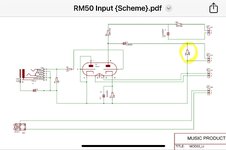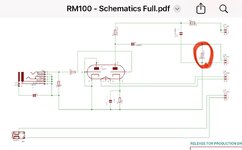BesaMoogie
Well-known member
Hi there, when comparing schematics of the RM50 with the RM100, I realised that there is an additional 3.3 Mohm resistor connected to ground after the 0.1uF cap in the RM50. This resistor is missing in the RM100 (labeled as "no part").
Any ideas what this resistor does? To my understanding, it does shunt some of the high end to the ground, before the signal is passed further to the module. Am I right? Or is this a grid leak resistor?
Any ideas what this resistor does? To my understanding, it does shunt some of the high end to the ground, before the signal is passed further to the module. Am I right? Or is this a grid leak resistor?


